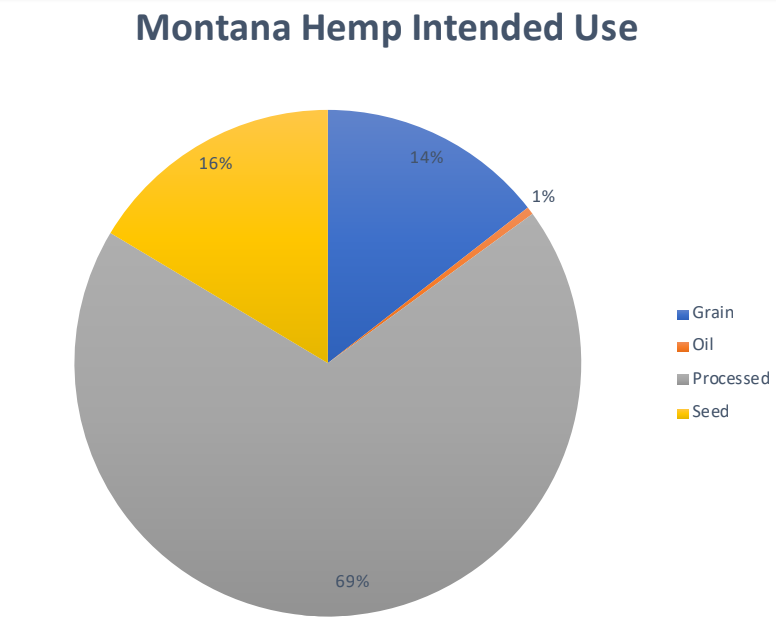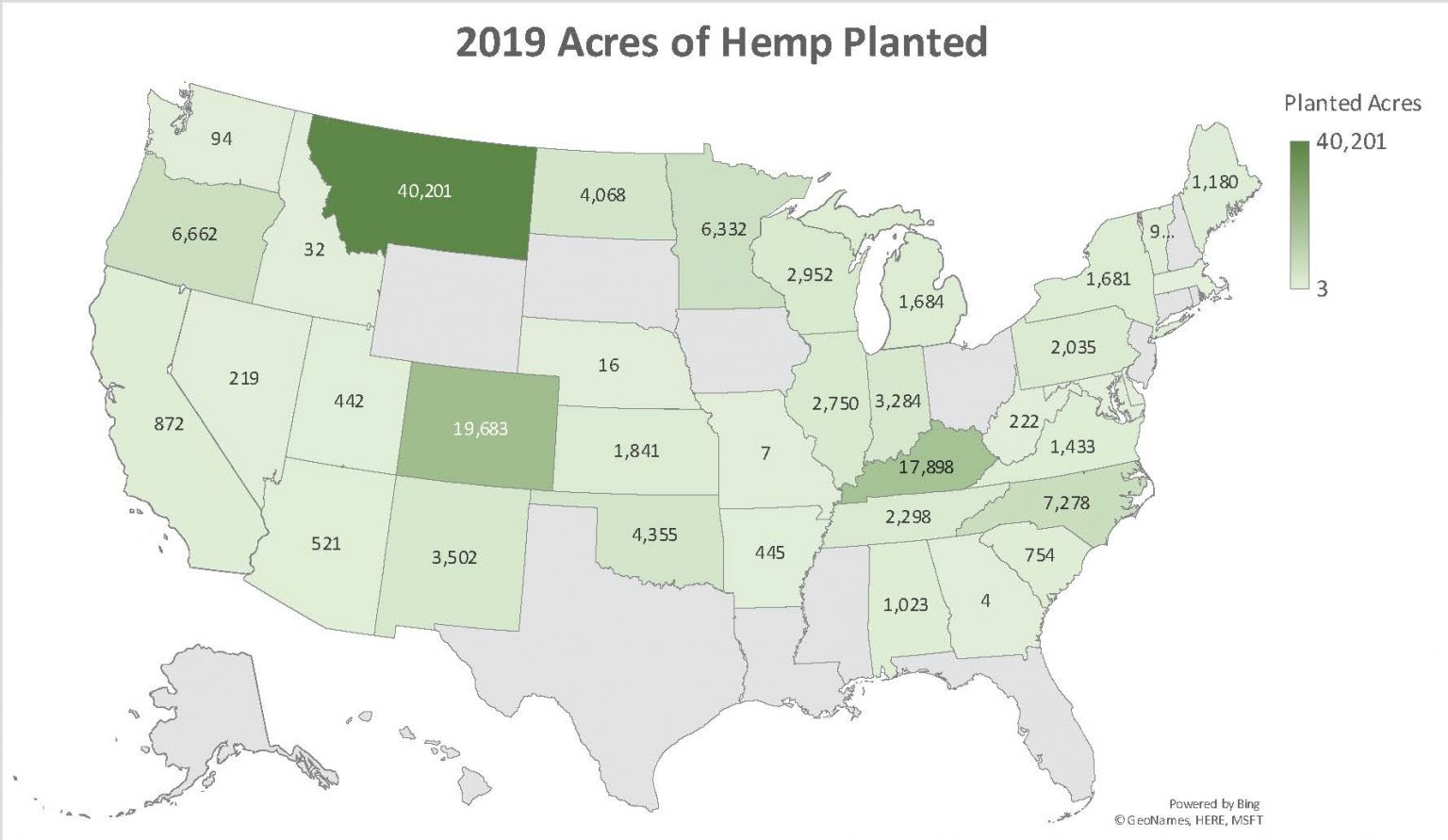This spring I wrote about hemp as a relatively new, rapidly expanding crop in the state. Montana once again rose to the top of hemp acreage in 2019, with data from USDA FSA showing Montana growers planted over 40,000 acres—more than double that of the next highest state, Colorado.
Once again growers at Montana’s northern border planted the majority of acreage. This year, growers in Hill county planted the most acres of any county in the state—nearly 8,000.

What are Montana growers doing with the hemp they grow? Data from USDA FSA show a wide variety of uses. The largest category is “processed.” We did a little digging and through a phone call with AMS, got some information on some of the included items in each category. Grain is likely animal feed, although that may be tricky because there isn’t FDA approval for that purpose. Seed is a similar story regarding lack of FDA approval, but is likely intended for human or animal consumption, or planting. The “processed” category includes CBD production and fiber products such as insulation, clothing, and car parts. Car parts?! If anyone has any examples to share here, please, please, please share with me.

Why grow hemp? Montana growers have mixed incentives for growing hemp. Randy Fortenbery at WSU gives a succinct overview of some of the hemp pros and cons. While the paper is from 2014 and some of the regulatory framework has changed, many of the messages – especially in weighing tradeoffs remain similar. One change is that we are now seeing much lower prices in grain commodities than we were in 2014. With those low prices, hemp introduces potentially profitable new markets, or could add to a farm business’ diversification strategy. Additionally, several studies have shown that hemp grown for fiber requires fewer chemical inputs than other crops, which may have some environmental benefits. Insurance is now available for hemp under Whole Farm Revenue Protection, mitigating some types of risk associated with growing the crop.
Why not grow hemp? Much remains unknown. The CBD market has received a lot of the attention because of the relatively high value of CBD products and rapid growth over the last couple years. However, startup costs for CBD processing remain high. According to Andy Gray, Montana’s hemp program coordinator, as of 2019 there were fewer than 10 CBD extraction facilities in the state and all were low volume.
According to a guide from the Government of Saskatchewan (download here) disease issues require careful rotation management. Potentially difficult separation of hemp seed from other crops and volunteer control are other important agronomic and marketing considerations. There are also many unknowns due to lack of research – since it was previously much more difficult to conduct due to hemp’s iffy legal status.
Another unknown is THC testing. Today’s Politico Morning Ag gives a good overview of these issues. THC levels can vary, depending on a host of environmental factors, as well as variety grown, and testing is a “delicate, high-stakes task” for which there is no national standard.
If you’re going to give hemp production in Montana a try, here are a few resources and things to consider:
- The Montana Department of Agriculture (MDA) implements the commercial hemp licensing program, and samples and tests to ensure THC compliance. (Hemp must not have more than 0.3% THC.)
- Commercial growers must use seed approved by MDA. More information is available on their website.
- While growing hemp no longer requires a federal controlled substance registration from the DEA (download this letter from the DEA for details), you do need a license from MDA.
- If you’re growing hemp on land you lease, you’ll need a signature from your landlord in your application.
- MDA has a great list of frequently asked questions and other details on their website (above).
This post was written with help from MSU DAEE Graduate Student Molly DelCurto.

